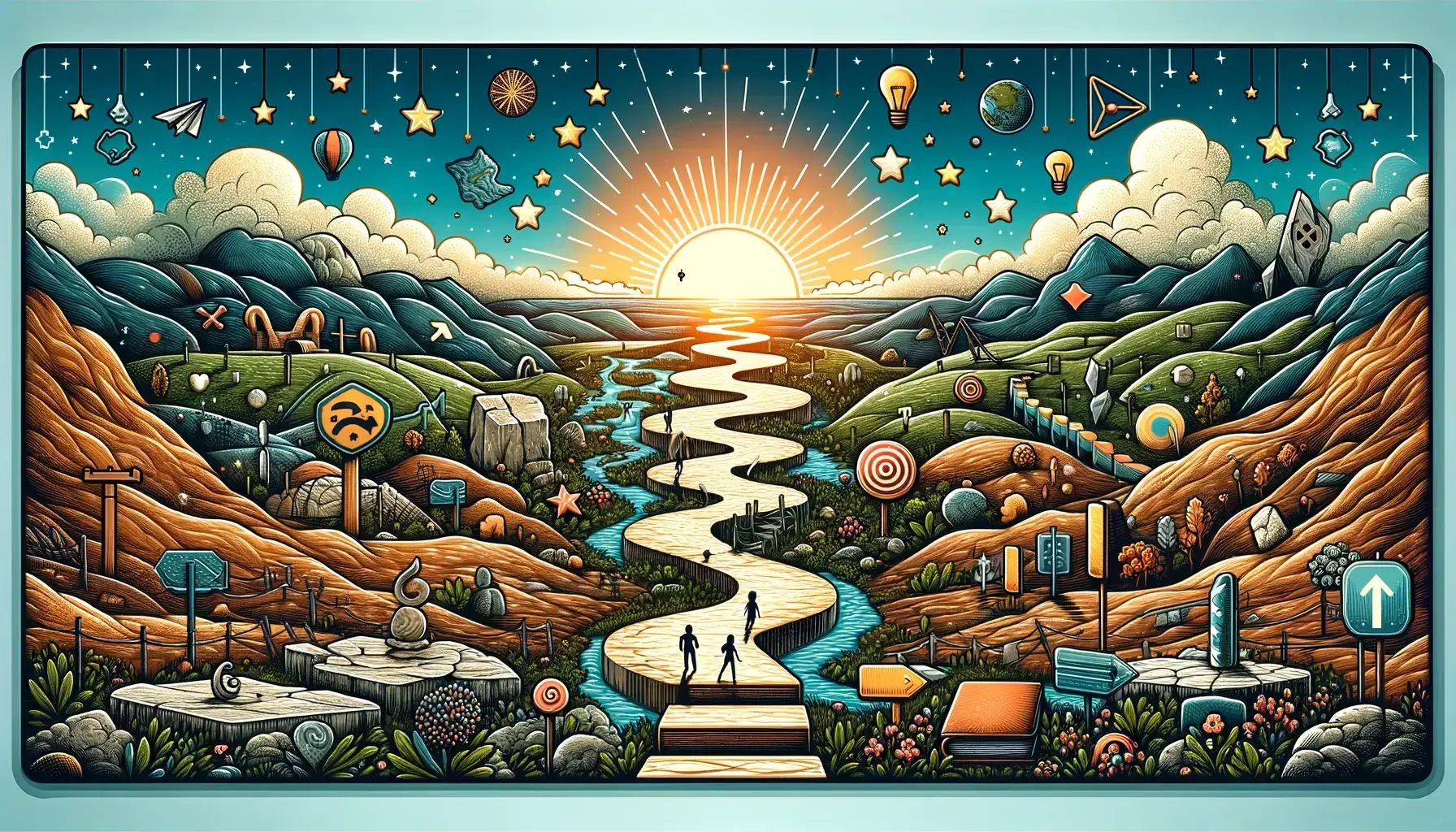
Brainhack - Stay motivated to achieve your goals with this free tool.
Sections
#1. The Challenge of Staying Motivated
Every year, it’s the same story: we set goals, start with great enthusiasm, but after a few weeks or months, the initial excitement fades. Why is it so hard to stay on track? In this blog post, we explore how we can overcome this challenge using brainhacks. But why do we stop pursuing our goals?
#2. Short-term vs. Long-term Goals: An Evolutionary Legacy
Our tendency to prefer short-term goals over long-term ones is rooted in our evolutionary past. Our ancestors had to respond to immediate rewards like food or shelter to survive. These behaviors are deeply embedded in our brains and are reinforced by the reward system, particularly through the release of dopamine.
Although this tendency is universal, individual differences are influenced by factors like genetics, upbringing, and personal experiences. Some people are better at delaying short-term rewards and focusing on long-term goals, while others are more prone to immediate gratifications.
#3. The Brain Hack: Leveraging Social Media Mechanisms for Personal Goals
In a TED Talk by the founder of Duolingo (learning new languages), an insightful discovery was shared. He demonstrated how Duolingo repurposed the addictive mechanisms of social media to motivate users to learn languages.
The principle behind this brain hack is based on using reward systems, similar to those used in social media platforms. A simple example is the “Like” function on social networks. When someone “likes” your photo or post, you receive immediate positive feedback. Your brain releases dopamine, a neurotransmitter associated with pleasure and reward. This instant reward motivates you to continue posting content to receive more such rewards.
Applied to personal goals, this means using series or streaks: Imagine your goal is to meditate daily. Every day you complete your meditation, you add a mark in an app or calendar. These consecutive marks form a series (streak). Similar to a “like” on social media, each mark acts as an immediate reward.
The trick is that with each additional meditation, you extend your streak. Our brain loves these kinds of continuous patterns and finds it satisfying to see an unbroken chain. Breaking a streak that you have painstakingly built feels unpleasant. Therefore, the desire not to end the streak motivates us to continue the activity regularly.
The psychology behind series and streaks leverages our natural inclination for consistency and continuation of started actions. We don’t want to interrupt a series because we value our progress and the associated efforts. This helps us stay motivated and continuously pursue our goals.
#4. Inspiration for Personal Tool: The Daily Motivation Newsletter
Maintaining a streak manually requires effort. The calendar, digital or on the desk, must be opened, and the day must be marked. It would be much easier if we had someone to do this for us and ask us daily. This insight led to the development of a personal tool: A daily motivation newsletter.
Imagine receiving a personalized email every day, reminding you to work on your goals. This email acts as your personal assistant, taking over the recording of your progress. You can simply confirm in the email that you have met your goal for the day, which then automatically extends your streak.
This process uses the same psychological principles as social media, but for a good cause: to support you in your goals. The daily email creates a sense of obligation and consistency by gently reminding you of what you have set out to do. Thus, maintaining your series becomes a seamless and effortless task, thereby strengthening your motivation and commitment to your long-term goals.
#5. Outlook and Conclusion
Motivation is a journey, not a destination. The key lies in finding techniques that positively utilize our natural brain mechanisms. With our new free tool, the Motivation Newsletter, we offer a method that does just that. It’s a step towards showing that we can use the same strategies that keep us glued to screens to also achieve our dreams and goals.

